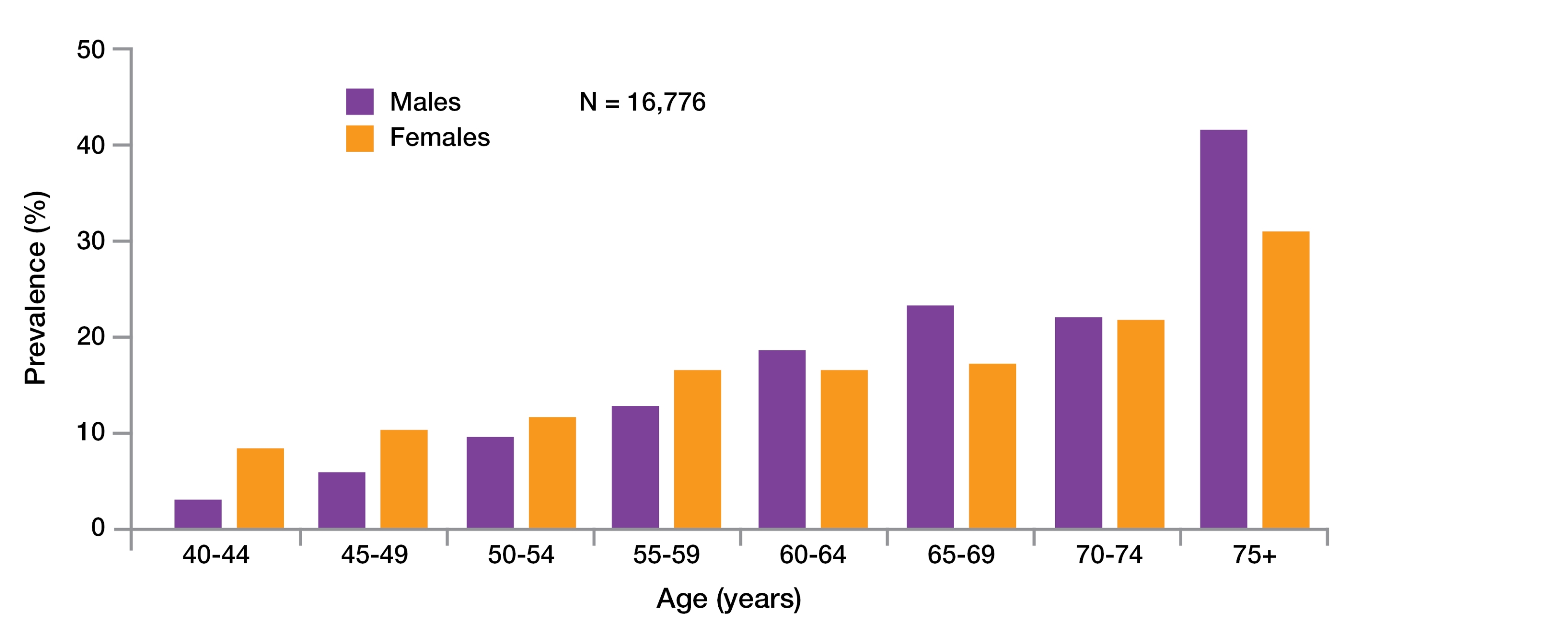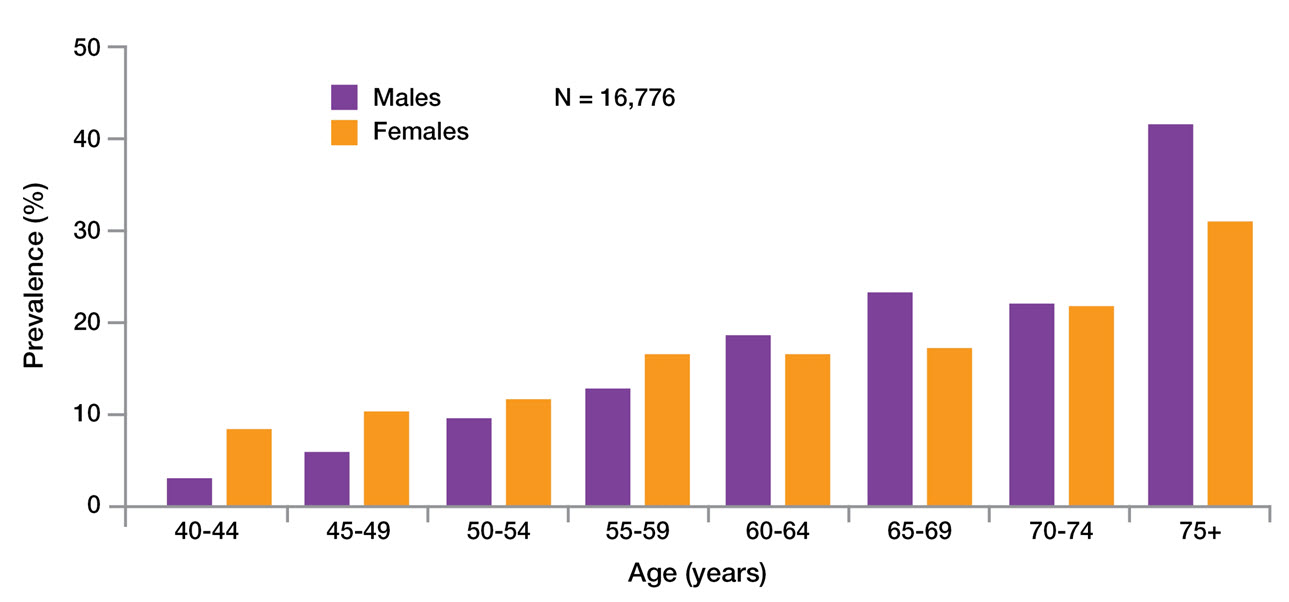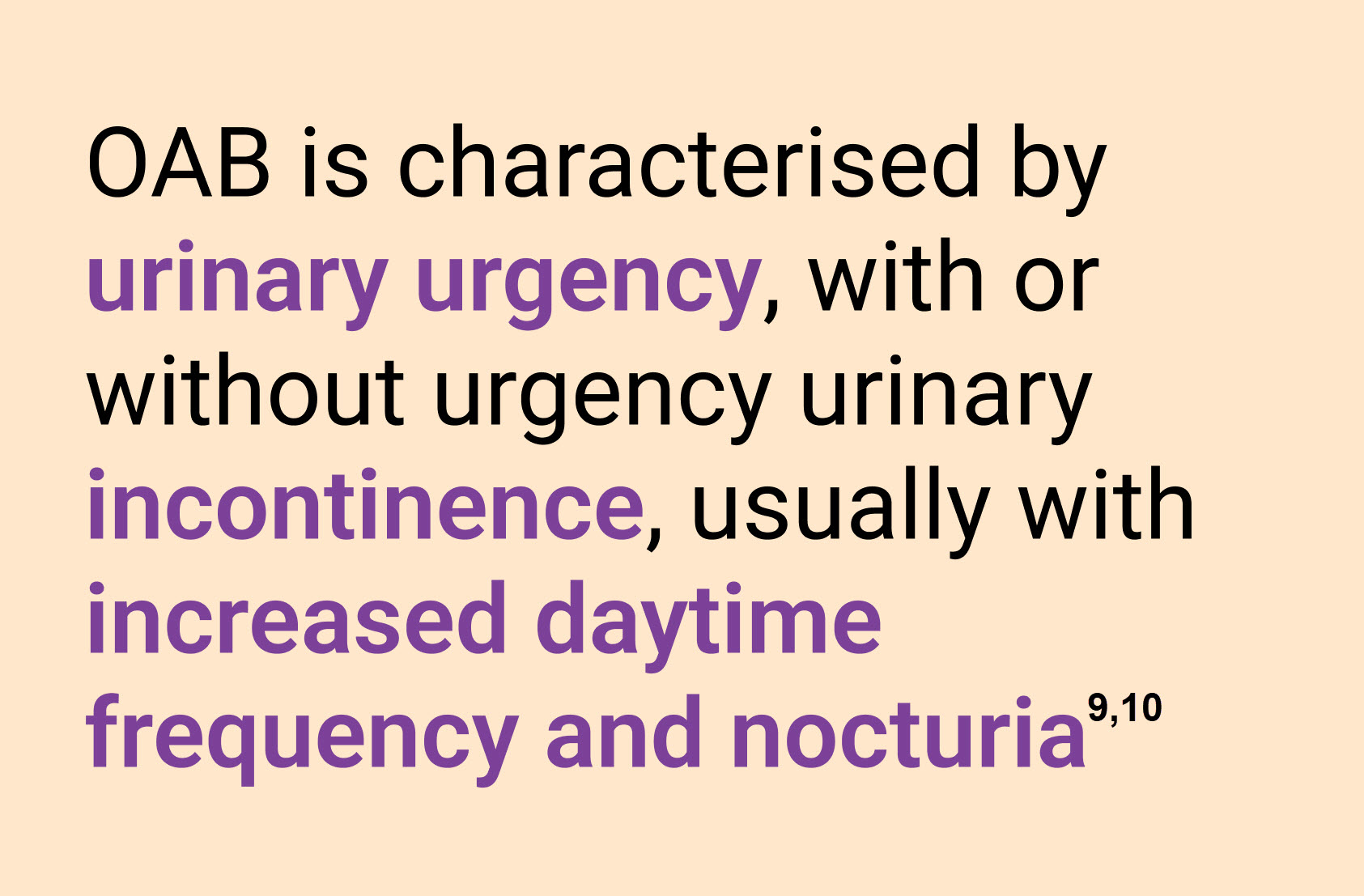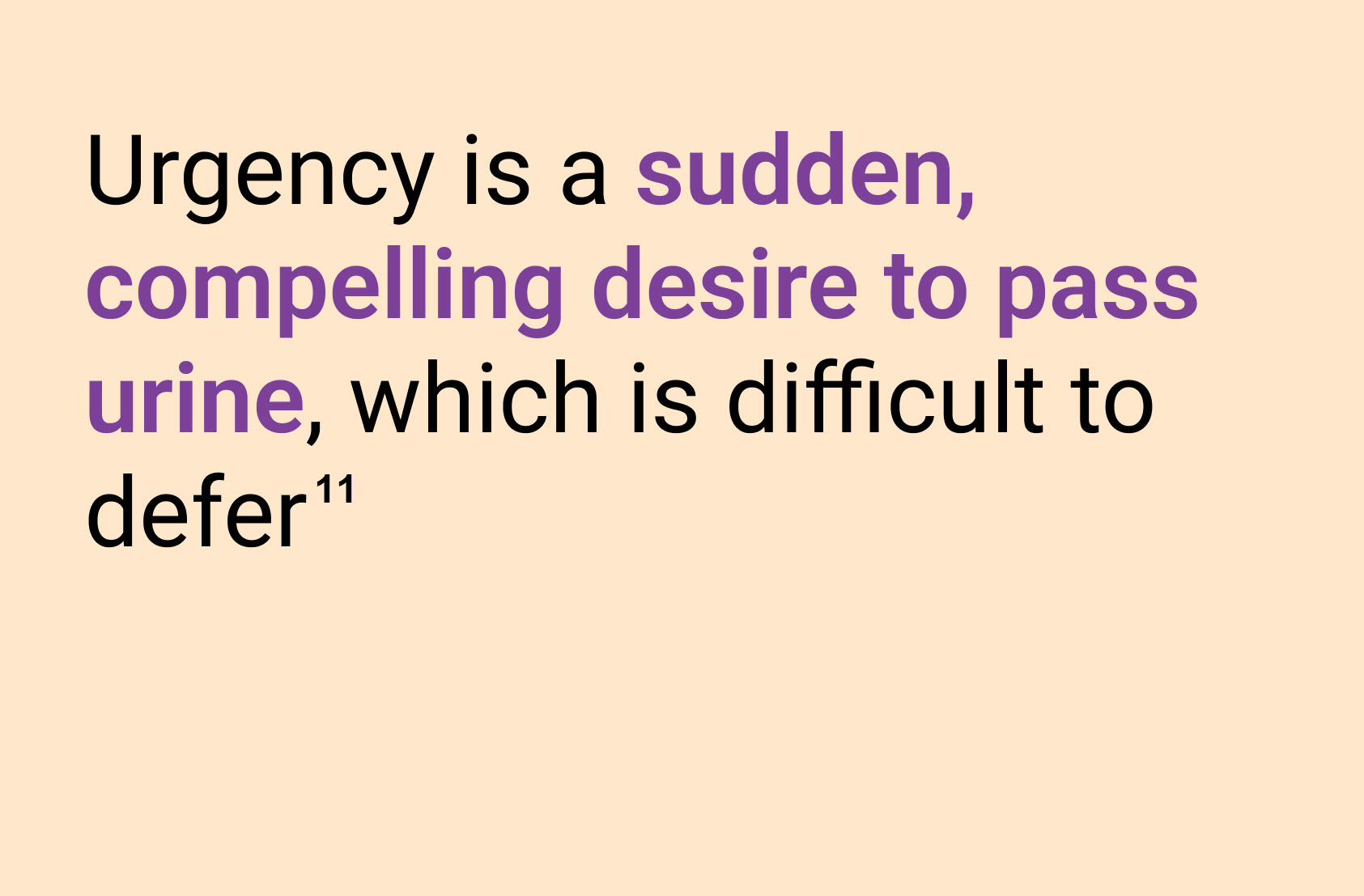This promotional material is intended for UK Healthcare Professionals only.
BOTOX® (botulinum toxin type A) Prescribing Information and adverse event reporting information can be found below.
Understanding and addressing unmet need in Urology: Overactive bladder (OAB)
OAB is a highly prevalent, chronic condition6
What drives a patient to see a doctor?
OAB is a complex, multi-symptom syndrome that can be difficult to treat, requiring appropriate effective management - including treatment or referrals to improve patient outcomes7,8
ICS definitions: incontinence9,11
- Urgency urinary incontinence (UUI) is the complaint of involuntary leakage accompanied by or immediately preceded by urgency
- Stress urinary incontinence (SUI) is the complaint of involuntary leakage on effort or exertion, or on sneezing or coughing
- Mixed urinary incontinence (MUI) is the complaint of involuntary leakage associated with urgency and also with exertion, effort, sneezing or coughing
OAB can significantly impair patients' quality of life (QoL) when not treated effectively7,8
OAB is a complex, multi-symptom syndrome that can be difficult to treat, requiring appropriate effective management - including treatment or referrals to improve patient outcomes7,8
ICS: International Continence Society; MUI: mixed urinary incontinence; OAB: overactive bladder; QoL: quality of life; SUI: stress urinary incontinence; UUI: urgency urinary incontinence.
Please refer to the BOTOX® Summary of Product Characteristics for further information on adverse events, contraindications and special warnings and precautions for use. The BOTOX® Summary of Product Characteristics can be found here
By clicking the link above you will leave the AbbVie Pro website and be taken to the eMC PI portal website.
Adverse events should be reported. Reporting forms and information can be found at https://yellowcard.mhra.gov.uk/
Adverse events should also be reported to AbbVie on GBPV@abbvie.com
Date of preparation: May 2025. UK-BUO-250039.











 Overall, on average, 16.6% of the population aged ≥ 40 years in six European countries have symptoms of OAB
Overall, on average, 16.6% of the population aged ≥ 40 years in six European countries have symptoms of OAB





